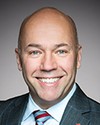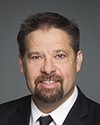I was just saying you're trying to get your mind into ancestral law and cultural protocol. It also connects with 203 communities, and who we connected with was a federally imposed leadership. Sometimes those leaders are also hereditary leaders. On the coast in particular, our hereditary leadership is still very strong. We still have our chief. The guiding force for us is that cultural protocol.
Evidence of meeting #32 for Indigenous and Northern Affairs in the 42nd Parliament, 1st Session. (The original version is on Parliament’s site, as are the minutes.) The winning word was community.



